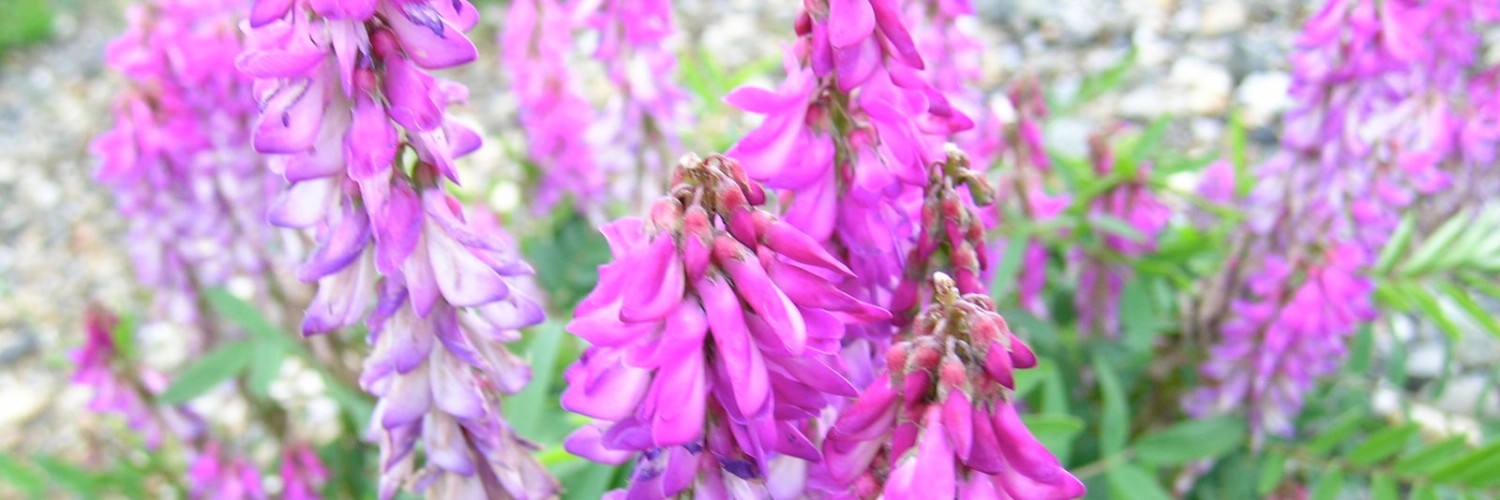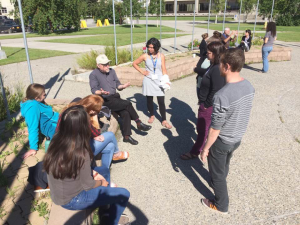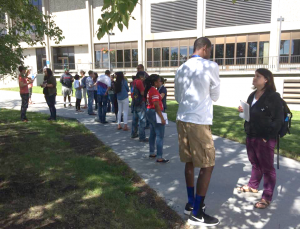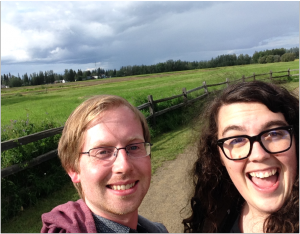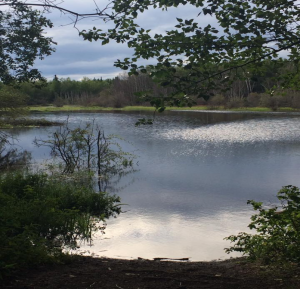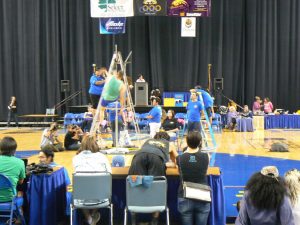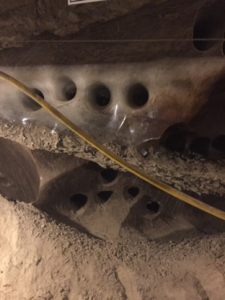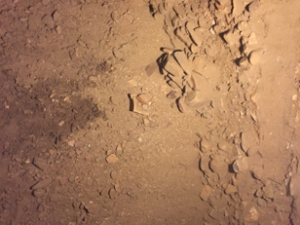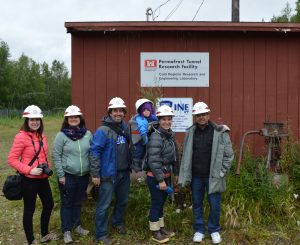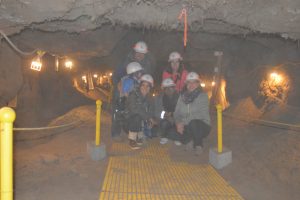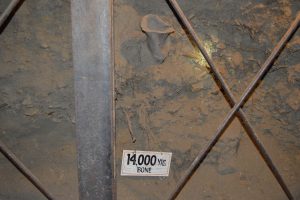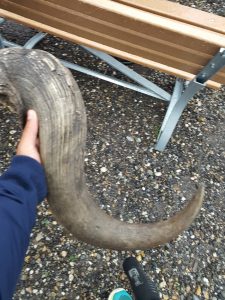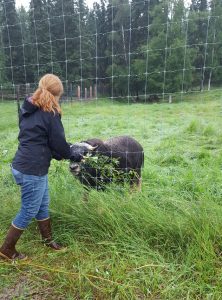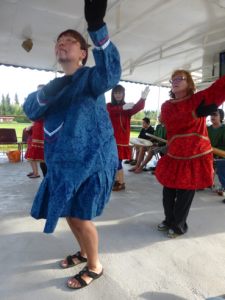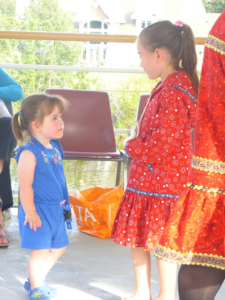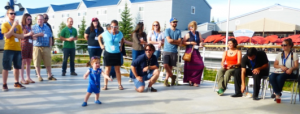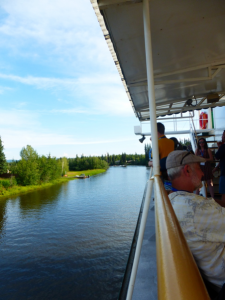26 July 2016 — Day 13
Blog post by Eloi Guinjoan, Universitat Autònoma de Barcelona, Spain
Today, it is the last day of ICRPS Summer Institute 2016. After two weeks of working on it, all the students have presented their projects in front of the panel of judges. Each student had to identify a policy problem and make a proposal about how to solve it, then comparing to that of another country. In order to have enough time, students presented their projects in two parallel sessions, each panel with different members.
After all students have presented their projects, the faculty announced the 5 students that had the best evaluation. These 5 students were Gemma, Sarah P., Laura, Mikäel and Courtney, and all of them presented their projects in the second round. After that, everybody was allowed to pick 3 of the best of these 5 presentations, in order to declare the best project, which finally has been awarded to: Gemma (1st), Sarah P. and Laura (tie for 2nd).
After the presentations, we are now reflecting on the program as a whole. Working on this project has had a double value for us: on the one hand, we have learned how to design a policy proposal and how to address it. But on the other hand, we have also learned how difficult it is to be a policy maker, especially when you are not an expert in the context that you are dealing with.
We understood how important it is to be critic, but at the same time, we realized in order to have our concerns addressed from a proactive attitude. Today, we saw our unique perspectives came out through each of our presentations, so we can all consider ourselves as winners, because everybody learned from each other.
So, the added value of this exercise was working together, cooperatively. This cooperation created a synergy of exchanging insights, perspectives and idea.
The final lesson is that the important thing is not always the final outcome, but the process itself.
25 July 2016 — Day 12
Blog post by Courtney Flathers, Oregon State University, USA
ICRPS 2016 is quickly coming to a close. Today four students who are leaving us early presented their final projects. It’s been a great experience to work alongside students from across the globe for nearly two weeks, sharing stories, learning from one another and being challenged to consider new ideas. The final projects are our opportunity to combine our personal interests with lessons we’ve learned about the North. As we cheer our classmates over the finish line, I find myself reflecting on the unique community we’ve built over the past 10 days. Many connections and friendships have been made here in Fairbanks that I’m sure will continue long into the future.
After student presentations, today’s lectures focused on poverty and economic development. Particularly engaging were activities that asked students to consider different ways to define poverty and inequality and the implications these definitions have for rural communities. We also had the opportunity to look comparatively at the different policies countries have implemented to address poverty and inequality. The final session addressed regional collaboration and economic development. We had fascinating discussions about the importance of considering how lines are drawn in society and to what end before adjourning for one final night of project preparation.
24 July 2016, Day 11 — with dinner at Creamer’s Field
Blog post by Steven Conroy, National University of Ireland, Galway, Ireland and Lindsay Trant, Oregon State University, USA
“You can use your universe to your advantage, from the obvious to the invisible”.
Today began with a very interesting session led by Robert Zabawa which encouraged the class to think about language from the perspective of anthropology. We were introduced to the concepts of ethnography, ethnoscience and taxonomy. The group activity was quite an eye opening exercise. The class was split up into guys and girls; each group was asked to categorize shoes using a taxonomy approach. The girls were much more detailed when it comes to explaining shoes (which was a big surprise!), while the performance of the guys left a lot to be desired! Simplicity versus chaos comes into mind for this particular group exercise. We liked this session due to the way in which it encouraged us to think in terms of hierarchical decision trees.
The next activity we engaged in was to go outside (the sun is back at last!) and discuss research methodologies with some of the ICRPS faculty members. We discussed mostly the qualitative approach and research practice when it comes to dealing with individuals, indigenous communities, focus groups and government departments. We were then treated to an informative presentation about ICRPS Barcelona 2017 by Eloi and Gemma. They discussed dates, location, accommodation, topics and ideas for potential field trips. The suggestion to visit a vineyard to taste some wine was particularly well received! Questions were raised as to whether Barcelona or Real Madrid are the best team in Spain, this is pending a decision from Ben!
Then, it was time for speed-dating! To take full advantage of the warm weather, we once again took our group activity outside of the classroom. In this activity, we lined up side-by-side and each student shared their project idea in two minutes with the student directly across from them. This was followed by one minute of feedback and discussion. Then, partners moved on to their next date. This was a valuable exercise as it encourages clear thinking and the ability to summarise ideas into a short space of time while still getting the key message across to your audience. For the first time during the whole trip, we thought we might be all talked out—turns out that was wrong.
Following on from this, we worked on our own individual projects for the remainder of the day until dinner at ‘Creamer’s Field’. We were treated to a lovely meal and a guided tour of the farm. The grounds of the farm and the surrounding area were explored by all involved. It was a very enjoyable evening, even though the bugs were out! After dinner, there was just enough time for our group to continue our ongoing obsession with the pool table in our common room. The Lindsay Rule was invoked many times (where the cue ball can be moved off the rail) and team STAOIFE reigned supreme once again (#LuckoftheIrish). We’re looking forward to hearing the different project presentations but sad that ICRPS 2016 Fairbanks is coming to a close in a few days…!
23 July 2016, Day 10 — Evening Excursion to the World Eskimo Indian Olympics (WEIO)
Blog post by Ben Brown, University of Missouri, USA, and Mikaёl Akimowicz, University of Toulouse, France
If there is one thing we have learned at ICRPS it is that no two days are the same and that each is a different topic. During our morning sessions we started with a panel discussion about the challenges facing rural Alaskan education. Local knowledge is crucial for remote communities, which face an extremely specific environment. Nevertheless their inclusion in the United States educational system requires curriculum to respect a certain standard; for which the conciliation of both is clearly a political challenge. Another interesting challenge for rural communities is the ability for citizens in low population density communities who wish to study advanced subjects. In recent years there has been a shift to online and digital instruction to meet the needs of these citizens. Several of our members brought up reasonable concerns with extended time in front computer screens and lack of interactive instruction.
The conversation about physical activity transitioned into our second morning topic of human migration. In today’s unstable world, we have all witnessed population movements happening for economic, security, educational, or even convenience reasons. A very important take away of this session is that we are all migrants in a certain perspective and understanding why people move is important for current and future research. During the afternoon, participants worked on their individual projects with fellow colleagues and faculty followed by individual working time.
The real treat of the evening was being able to attend the 2016 World Eskimo Indian Olympic games (WEIO). Finals were held in several Native events and medal presentations were presented to winners. Not only was it cool to witness an important historical part about the Alaska Native heritage, but several of our colleagues got to volunteer in different events. Two ICRPS champions, Bobby, the Georgian Peach, and Yassine, the awesome opossum, joined the ear lift contest to fight for our colors! There were also several crafts and Native goods on display and for sale.
22 July 2016, Day 9 — Chena Hot Springs Resort
Blog post by Stan Edwin, University of Alaska Fairbanks, USA
I found Chena Hot Springs very interesting, the first time I’ve actually been out here, and reluctant to come along on the tour. The tour showed us the renewable and recyclable energy strategy’s being tested and run as a viable part of the resort. As a physicist the simplicity behind the ideas is captivating, and as an indigenous Alaskan Gwich’in Indian, the idea of renewability and cleaner caught my attention.
The idea of reversing the organic chemistry of plastics by subjecting plastics to a slow constant heat and breaking the bonds is a great idea. This idea is doable if you do not have the idealisms of making fast money, or generating an abundance of energy, fuel, in the least amount of time. Another idea being investigated was from thermodynamics courses being taught in college, the workability of the sterling engine, with the idea of screw increaser.
In testing the viability of these ideas, which has always existed, Bernie Karl uses machines from eras long since gone. I can understand his logic, these machines where built when the principles behind them were new ideas, so the machines are the simplest possible utilizing these ideas. Today most machines have been made more complex by the drive towards efficiency.
When you are testing as a prototype a new principle or reusing in a new way old ideas and principles of physics that has been around for a while, keeping it simple is key. I am indeed impressed with what Bernie is doing out there, since he has the means, I wish him the best in his endeavors.
We all had fun; I know I did and am glad I attended.
Blog post by Yassine Dguidegue, Missouri University, USA
Our visit to Chena Hot Springs Resort, Alaska, provided us with challenging, yet informative, insights into how non-governmental institutions frame their conception and implementation of sustainable rural development. Our Journey with Burnie, one of the founders of the resort, was a journey into a peculiar world of policy framing and implementation that is locally based, community-oriented, and religiously guided. Burnie’s discourse, irrespective of its idiosyncrasy, is compelling to view the effectiveness of rural policies from a place-based and community-based perspective. From a place-based perspective, Chena Hot Springs showcases how Place-based resources shape rural development: from a gold mining site to a geothermal energy based resort, local natural resources of the area have shaped the area at the economic and socio-cultural level. From a community based perspective, Burnie emphasized the role of his religious teachings and parent’s legacy in shaping the courses of development Chena Hot Springs have taken. Thus, the resort epitomizes the complex, iterative, and multidimensional interaction between community based values and place-based resources. This interaction requires transdisciplinary approaches to grasp motives of its inception and its manifestations at the economic and socio-cultural level.
Blog post by DeQuarius King, Tuskegee University, USA
Today was an adventurous, yet informative excursion. We traveled 50 miles out of Fairbanks to the Chena Hot Springs Resort. Noticeably on the drive, distance to density was prevalent for the inhabitants along the county road. Upon arriving, Bernie Karl gave the best introduction of himself and his family traditions. “Nature has no waste,” was the theme of today’s adventure. He promised to make this statement reality throughout our stay on the resort. The perception of waste managers came off as harsh in the beginning, seeing as though Mr. Bernie has no filter. He addressed the fact that morals and legality may clash but morals are circumstances that must not be ignored. The plastic bottle oil conversion system was the first tale of truth. Grafting plant roots to increase yield on limited space plots was also a great tactic Bernie explained. Just about anything that was once trash can be utilized for a different purpose, from house siding to ashes converted to cement. A valid point was made about the American population being 5% of the world’s population but consumes 30% of the world energy. Something to ponder upon…The horticultural truth gives young agronomist an insight on the wisdom Mother Nature holds. Bernie gave vivid explanations on how controlled environments produce more efficiently. I definitely left Chena Hot Springs with a different perception of what we call waste. We must innovate and recreate. I’d like to thank Mr. Bernie again for the jewels and the ICRPS family for this ultimate experience!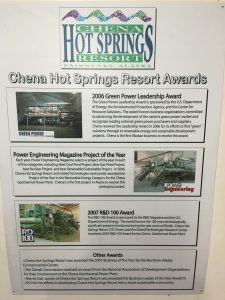
Blog post by Nadinne Gonzalez Romero, Universidad Autónoma del Estado de México, México
In our world, plagued with climate change, there is a need for innovation and creativity to solve our problems that threaten our livelihood systems. Since energy has been very crucial for development at the global level, we need to think of alternatives to non-renewable energies which have become detrimental to our life and the environment. Chena Hot Springs exemplifies the adoption of innovative alternative energy which is inspired by nature. Bernie kept reiterating that he is showing “how nature can work with you and that you should work with that”. His work with nature is built on two principles, first his respect for “mother nature”, and second his perseverance which has no limits. As a researcher in tourism studies, I deem these two principles as essential to attain sustainable tourism. Chena Hot Springs is a model to learn from because it pays attention to the tenets of sustainable development: environmental protection, economic viability, and social equity.
21 July 2016 — Day 8: Excursion to Calypso Farm and Ecology Center
Blog post by Bobby Daniels, Tuskegee University, USA
The main focus of today was food security — a conversation that many are not willing to have. We spoke on potential ways of mitigating the waste of food and providing better nutrition with the types of food we eat. As a part of that, we talked about diversifying our diets and creating awareness of overeating and other forms of potential waste. In continuing the dialog , we spoke on what food insecurity means for rich and poorer countries, questioning what could be some possible reasons.
On top of the sessions about food security, we went to Calypso Farm. A eye opening and vitally important pillar of the Alaskan community. Here I had the opportunity to hear about the effects of policy on real world attempts at sustainability and security. The trip also forced me to ask myself what I could do to be an active participant at change and not just a bearer of knowledge in my community. The answer I came up with was simply to give the youth more exposure to farming. Overall, the day gave me a better understanding of what is and is not food security.
Blog post by Amanda Rhodes, Oregon State University, USA
- More small scale farms
- boots on the ground-experienced people to inform policy
- more information sharing and educational outreach
- connections and relationships need to be formed
- local knowledge should be used
20 July 2016 — Day 7, “Day Off” Excursions: Wickersham Dome Hike, Canoe Float on the Chena River, and Permafrost Tunnel Tour
Wickersham Dome Hike
Blog post by Stan Edwin, Alaskan Gwich’in, University of Alaska Fairbanks, USA
On Wednesday morning, ten of us, students and faculty of ICRPS, signed up for a hike through the wilds of Alaska. Since we are an international group, we are all endowed with certain forms of expectations, worries and desires of what to expect. Some wanted the majestic views of rolling hills of Boreal forests as seen in magazines and books, others a glimpse of the real Alaska, including wildlife.
Well Alaska does not disappoint, with the exception of animals. I constantly reminded them that there is certain wildlife they would not want to see; especially with our only defense our guide’s bear spray. It was low overcast with a hint of rain or drizzle in the air when we all boarded the UAF van. It was planned that we walk from the Dall road, the pipeline road, through a walking trail to the top of Wickersham dome, a good few miles out.
When we arrived at our trail head, we all prepared, it was a little cool but not wet nor windy, was low overcast and humidity high, slightly damp air, but not wet; the grass and leaves were wet from morning dew. As we started out, due to our altitude and the low overcast, we were literally in the cloud. As some raced on, the idea of a hike of some is more towards health and exercise than a walk in nature, a race.
As most of our cohort scurried off down the trail, I chose to bring up the rear since this is the land of my peoples, the Gwich’in, and the land of my birth. As a few of us stragglers straggled along, we started looking for different types of fauna and what berries we could find. The more exertion you did, the easier it was to sweat and chillier you got, mostly due to the humidity. Was a little too chilly in the clouds this morning for our state bird, the mosquitoes. Joke! Lucky for them, not the mosquitoes!!!
We’ve seen blueberries, low bush cranberries, salmon berries, later crow berries and black berries. When we caught up with the group, I asked what they saw on the trail, anything we could eat, only blue berries was the reply. This was a good time, walking slow and observing the abundance of the land, talking also and getting to know each other. We disclosed our lives, expectations and plans of where we are going and why we are here at ICRPS, personal information only close friends would be privy to. Laura and I walked together for a bit, each learning the culture and lives we have lead. Later Erika and I would do the same as well, but we will get to that.
The trail was nothing like the trails a person would find in the lower 48 parks, nice and built, nope, our trails were Alaskan trails. A foot path un-kept and wet with puddles and small flowing runoffs with the bushes being wet, and as such your trousers around your feet. We seen a number of different mushrooms, being it so damp, and while in the cloud no animals large or small, nor bugs or mosquitoes. I was constantly asked about the mushrooms, which could be eaten and which bad. Unfortunately that knowledge is gone, lost with our elders of time since past, I did not know these answers. Though some things are lost to time, new things are learned and fill the gap of knowledge lost.
As we approached the tree line, and the cloud being so low, our view was limited to around hundred feet. Disappointment for some whom were expecting to see the view of Alaska hills off into the distance, but reminding them that what they can see has its own value, differing foods of berries, and the lit-dee-musket tea, also known as Labrador Tea.
Told Laura that the sun would not dissipate the cloud, fog, but the wind may blow it away. As we came upon a small protrusion of rocks, the wind picked up and the chill of being damped and sweating started to set in as the cloud started to move. Everyone started to feel the chill of being damp, and our feet getting wet. The energy required for trekking about the Alaskan wilderness above the tree line in such weather, hunger and the weariness of being damp and slightly chilly from the wind started to settle in, the discomfort and slight disappointment of expectations. Even I the Alaskan started to feel the discomfort and weariness.
Upon the protrusion of rocks at our destinations end, we all ate our sack lunch as we hid from the wind behind rock outcroppings. Comradery and spirits were high among my new friends. I think the experience of seeing and experiencing the real Alaska they wished for started to take a bigger value over the expectation instill through magazines and pictures to entice tourists. These are smart and insightful people those that attend ICRPS; an international accumulation of good hearts, thoughtful, and insightful people. Couple people of the group, those from the chillier and higher altitude countries in Europe. They, a few displayed little to no effects by the wind and dampness, I think they are well adapted to the small discomfort.
On our return, retracing our walk out, the wind started to pick up; fortunately most of the trail we walked in was behind the hill out of the wind as we walked out. By the time we got to the tree line the cloud started to dissipate, and our view over the landscape grew in distance. Soon those that were expecting the majestic view of rolling hills of boreal forests got their wish. As it started clearing up and the land got drier, birds started coming out, and a few mosquitoes, only a few nothing like the bombardment we Alaskan’s know and expect to be true.
Erika and I took our time walking back, some of the group waited from time to time, but finally gave up on waiting and soon we lost the noise of them to distance. We took pictures of the rolling hills of Alaska’s White Mountains, and Erika has a couple look at me I’m in Alaska pictures. Fortunately the mosquitoes were but a few, or I would have had a mad woman on my hands if there were any more in numbers greater than one, even that one with it’s bzzzz constantly in here ear was more than enough.
As we walked, we exchanged and talked of who we are; our families and places we are from, things friends would know. In doing all this on our slow trek, we reexamined all the different berries and the land about. As we approached our starting point, the group was on a small hill waiting patiently. They had no expectation of being in a rush, for the view from that small hill of where we were and went unable to see before was now laid out before us. A picture moment of and for the group and individuals, we rested and sheared stories for a moment.
On our ride back, we stopped at the Hill Top gas station, eatery and had pie. The pie idea was suggested by our guide, Curtis. Our guides, even though he was raised in Anchorage and the young lady accompanying him as our secondary, though they started knowing everything, arrogance. They too started fitting in, and at the end they learned something new, not only of the woods but of the people accompanying them. In the end, I would safely say we all are now friends, and all have learned new things and have an experience of Alaska we not only wanted but needed.
River Float on the Chena River
Blog post by Nadinne Gonzalez Romero, Universidad Autónoma del Estado de México, México
The rest day was not exactly a break, five hours paddling on the Chena River is an experience I will never forget, while you let the river take up his cause in one hand the boreal forest in conjunction with the Chena River offer fresh air and beautiful landscapes through which you remember the spectacular nature, on the other hand, technology is present with military aircraft and helicopters flying over your head.
Teamwork in this activity was essential to direct the canoe well while facing many water currents. It was difficult, because sometimes our arms feel tired, but the opportunity to see a moose with her calf and an eagle flying over the area was worthwhile. How long we can continue to enjoy the services that nature provides us if we do not realize that all our activities impact the environment? It is a question that remains in the air and people should seriously answer.
Permafrost Tunnel Tour
Blog post by Hari K Poudel, University of Missouri, USA, and Sarah Baines, University of Saskatchewan, Canada
Today we became part of a special group of people to experience permafrost from the inside. Kenji Yoshikawa of the International Arctic Research Center explained that in the 1960s the US army excavated a tunnel where placer gold mining created an escarpment into a slope underlain by localized continuous permafrost. This tunnel is now called the Cold Regions Research and Engineering Laboratory and tells the 40,000 year old geologic story of the area. Originally used for weapons storage, it is now a research site for developing civil engineering and mining techniques in frozen soil. Ice structure and frozen soil behavior over time are also key academic interests. One especially “ooh” worthy part of the tour was a layer of ice containing “hibernating” bacteria that proved the ice was formed when standing water on what was then the ground surface froze 25,000 years ago. Ice age mammoth bones commonly protrude from the silts making up the tunnel walls. Reflecting on the story of the permafrost, we internalized the importance of climate change and policy discussions because the ice is connected to natural conditions and, while people only last about 100 years, ice lasts for many generations.
19 July 2016 — Day 6, with excursion to the Cold Climate Housing Research Center (CCHRC)
Blog post by Veronica Gonzalez, Oregon State University, USA
Today we had the opportunity to discuss climate change adaptation and policy in a comparative international context. In a presentation by Dr. Gabino Nava, we learned that incorporating the perspectives of local people is vital to policy success. Following this, we performed a collaborative activity brainstorming to identify adaptations needed in “Hypothetica.”
We also had a panel of professors who discussed regional issues relating to climate change. The group had very heated conversation about discourses on the flaws of political institutions and how communication between political poles needs to involve great trust and understanding–a conversation topic that continued well into lunch hour!
After lunch, we walked to the Cold Climate Housing Research Center (CCHRC), where we discussed the development and testing of energy technologies in the North. We had the privilege of receiving a guided tour, where we learned about innovative housing structures, toilets, and sources of energy that are sustainable in extreme northern climates. There was also a garden on the rooftop of the building! After walking back to campus, we talked about how the research center helped to develop our project ideas. We were then let off early to enjoy each other’s company before we ventured off on our various group excursions tomorrow!
18 July 2016 — Day 5, with excursion to the Large Animal Research Station (LARS)
Blog post by Danielle Smith, Tuskegee University, USA and McKenzie Warden, Oregon State University, USA
On the fifth day of ICRPS we started off with a morning excursion to the Robert G. White Large Animal Research at the University of Alaska Fairbanks, better known as LARS. The weather prevented us from walking, so we took buses to the location. The animals that we saw at the research station consisted of muskoxen, caribou and domestic reindeer. Most of the animals are tame and therefore useful in nutrition, metabolic, physiological and behavioral studies. We had a wonderful tour guide that showed and told us a lot about the animals and a brief history behind the research station.
After lunch, we shifted gears to thinking about our own projects. Using SWOT (strength, weakness, opportunity, and threat) analysis, each student brainstormed ways in which their proposed policy solutions might encounter these four different things. We then broke into our respective topic groups and discussed in greater detail these strengths, weaknesses, opportunities, and threats. The conversations were lively and helped the students work towards conceptualizing their projects to a greater extent. We finished the day with a session on Energy Security: Renewable Energy and Rural Development, which also enabled students to gain greater insights into the challenges and opportunities present within this exciting and multifaceted area of rural policy.
17 July 2016 — Day 4
Blog post by Luis Angel Lopez Mathamba, Universidad Autónoma de Estado de México, Guatemala
During the day we analyze information about “Governance, Different ways of knowing, and The food water and climate Nexus”, all applied at rural policies.
In “Governance” we see the new way of apply the policies, that mean that all need to start with the stakeholders and improve the policy with a multidisciplinary group. It´s important to say that we see two important examples. (i) The first example shows us how the governance is not applied in the best way, because the government decide all the actions for the conservation of forest in a group of ejidos, that´s important because we learned how identify when the governance is not applied considered stakeholders.
When we discuss “Different ways of knowing” we talk how the policies are created, considering the kinds of origin of knowledge. Is important because identify that the policies are assembled mainly with academic knowledge, forgetting the traditional knowledge, especially the knowledge with intrinsic value.
In the theme The food, water and climate Nexus we discuss the efficiency of the traditional agriculture versus the industrial agriculture, based in the energy that its use. We also considered that is a good idea promote the dynamic agriculture (collect plants and hunt animals). During the class we also talk about Polanys thoughts about embedded economy, showing us that we have different ways to recognize the production of good and services for its consumptions, because it´s actually have more weight in market, over the culture, beliefs and rules.
We can say that during the day, we acquire essential concepts for create, transfer, apply and evaluate policies in rural areas, with the intention of use in the best way the natural resources and have a high level of acceptance of the local culture.
Blog post by Sarah Pohlschneider, University of the Highlands and Islands, Inverness College, Scotland
Brent started the day demonstrating how innovative plans, programmes and policies enhance the carrying capacity of communities in Cascadia.
The theoretical possibilities and far too real barriers to establishing governance structures in Newfoundland and Mexico were demonstrated by Ryan and Gabino, who both saw case studies fail due to government structures. However, as Brent stressed in the next session, there are key elements to providing successful collaborative governance structures, which will make governance groups even resilient to gun-loaded hill billy intervention. Sensitive to chances, limits and structures of (un)successful governance, we were encouraged to design an approach within our focus groups.
The afternoon session focused on different ways of learning, acknowledging that conventional academic epistemology is based on a context dependent value system that is not universally applicable and discriminates against other types of knowledge. An inspiring group discussion with the panellists Sean, Mike and Robert revealed how the devil exchanged Jesus for Alabama and Georgia and, more importantly, how “the ways we use our knowledge make us wise” (Sean).
The final session dealt with the food-water- energy-climate Nexus and saw informative presentations from Marco, Tom, John and Matteo, highlighting issues in agriculture-energy relations, Nexus thinking and food waste. The day ended with a vivid interchange of ideas and questions from faculty and students.
16 July 2016 — Day 3
Blog post by Naomi Finseth, Brandon University, Canada
As day three of ICRPS 2016 comes to a close I pause to reflect on the many topics discussed today. What I find interesting is that I am reflecting more on the informal conversations I had throughout the day rather than the formal presentations. This is not to say that the formal presentation are meaningless, instead, I see the true power of ICRPS in the networking and relationships that are developed over the course of these two weeks. We truly are building both human and social capital as we learn and grow at ICRPS. Today we discussed many important topics such as what a rural policy graduate certificate could look like, mobilizing research to inform policy and social/environmental justice. These topics were all very interesting and engaging, however, what I enjoyed the most was supper at the Salmon Bake (restaurant in Fairbanks). It was at this time that I was able to get to know more about the different contexts that we all live in. It was amazing to learn about social, cultural, economic and political differences that are experienced by each of us and how they change the way we view the world and how we approach rural and northern issues. I am looking forward to continuing to learning about my fellow collogues and rural communities around the world while I enjoy the beauty of Alaska.
Blog post by Gemma Estany Ferrer, Universitat Autònoma de Barcelona, Spain
The more the institute advances, more interesting topics are arising. Today we started with the presentation of how will be our final pitch presentations. We will have to come up with social innovative ideas and transfer/compare it to northern territories. I think that it is very challenging and a fun way to learn, also because we will have to exchange and debate in groups dealing with similar topics. Related to this, we also had some insights on how to translate our findings into policy briefings and presentations which raised a very interesting debate about the relationship between policy research and policy implementation. Additionally, only to mention some of the ideas that intrigued me the most today are: we can measure social capital and in many cases it is not fully used, so how can we trigger it? Climate change has a global dimension on environmental justice further than what I imagined. And finally, how much salmon can you be able to eat in the Salmon Bake in Pioneer Park? By the way, it was a great afternoon activity…!
15 July 2016 — Day 2, First Day of Sessions
Blog post by Jana Dietershagen, University of Bologna, Italy
As a beginning of the ICRPS 2016 summer institute we first of all learned and discussed about “What is rural policy?” The definition of rural that has captivated me today was defined as: density and distance to density. Having lived in the Netherlands for five years, I experienced that the density concept is very relative, because the Netherlands is the most densely populated OECD country and a very small distance from the city could mean already rural. Further, we have learned about the difficulties the inhabitants of the rural northern sphere face in regard to food security (a small cabbage could cost up to $28!), and the effects of climate change on the way of living and moving (earlier melting of the ice layer). Then, we finished the day by thinking and discussing about our own identities and connection to rural and the impact we could create to rural communities.
Blog post by Aoife M. Ní Fhlatharta, National University of Ireland, Galway
Day 2 of the ICRPS 2016 Summer Institute consisted of extremely informative and intriguing sessions which engaged with a range of key topics such as rurality, the dimensions of rural policy, and life in the rural North. Both the lectures and group work activities furnished us a with a broader perspective of what it means to reside in a rural area and how one should look at developing it through the policy framework. It was suggested that when exploring a model for rural policy less emphasis should be placed upon markets and economic dimensions; instead priority should be given to the environmental component as it remains as an imperative facet to society. Undoubtedly this point seemed to capture the attention of the students as numerous discussions emerged on the importance of economic and environmental relationships for rural areas. Students were also furnished with the difficulties faced by those in the rural North and the difficulty they have in accessing fundamental resources and services such as food and transportation. Undoubtedly day one was an extremely productive and thought-provoking day that allowed us to compare and contrast the disparities of rural areas within various countries across the globe.
14 July 2016 — Day 1, Introductions and Welcome Reception
Blog post by Sarah Baines, University of Saskatchewan, Canada
Very warm temperatures (30°C/86°F!) and brilliant blue skies welcomed participants from 13 countries to Fairbanks, Alaska. Today was about building new and reinforcing existing connections between students, practitioners, and academics with shared interests in preserving and strengthening rural peoples and landscapes. We introduced ourselves while on board the sternwheeler Riverboat Discovery, and conversations continued to flow easily as we cruised the Chena River. Accompanying us on the river cruise were the Pavva Iñupiaq Dancers who explained some of the Iñupiaq peoples’ culture and traditions through song and dance performances. A few keen people even joined the dancers for one song, showing off their coordination and rhythm. This small taste of the landscape and peoples of Fairbanks helped set the stage for the upcoming sessions anchored in northern rural settings.

